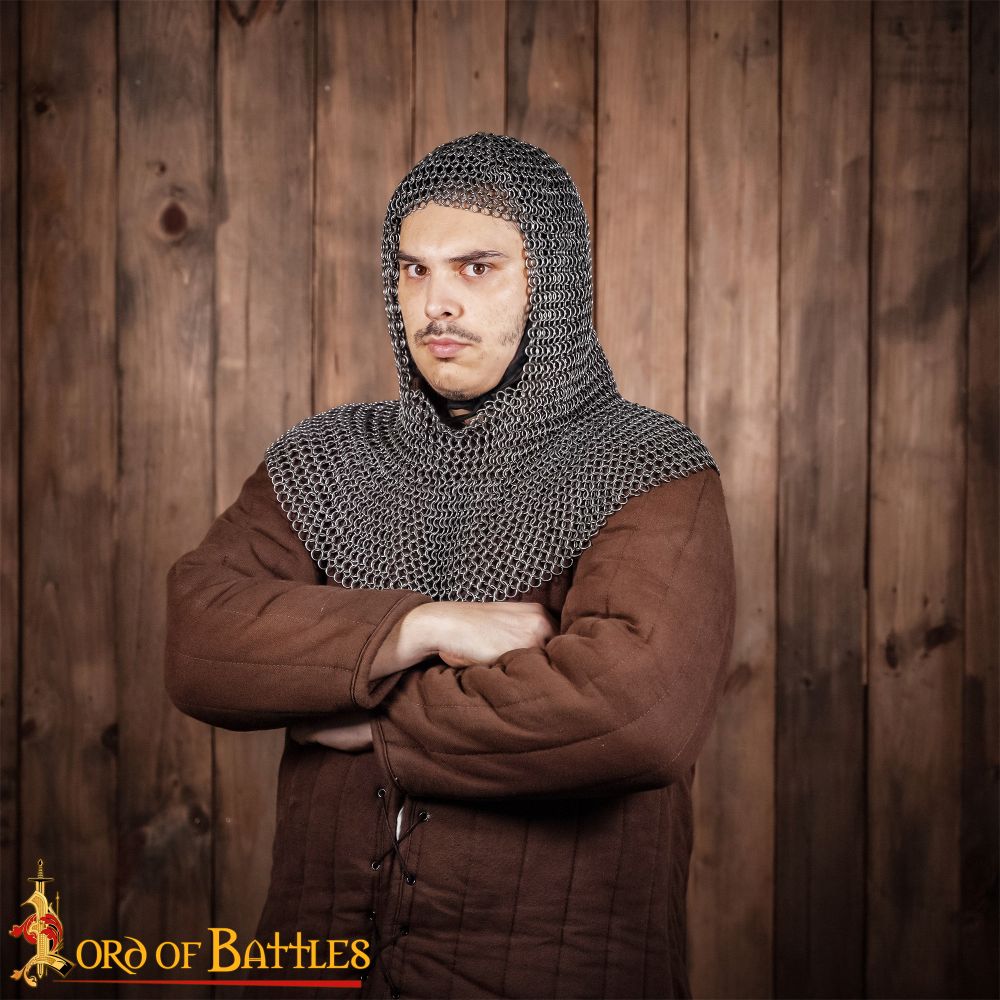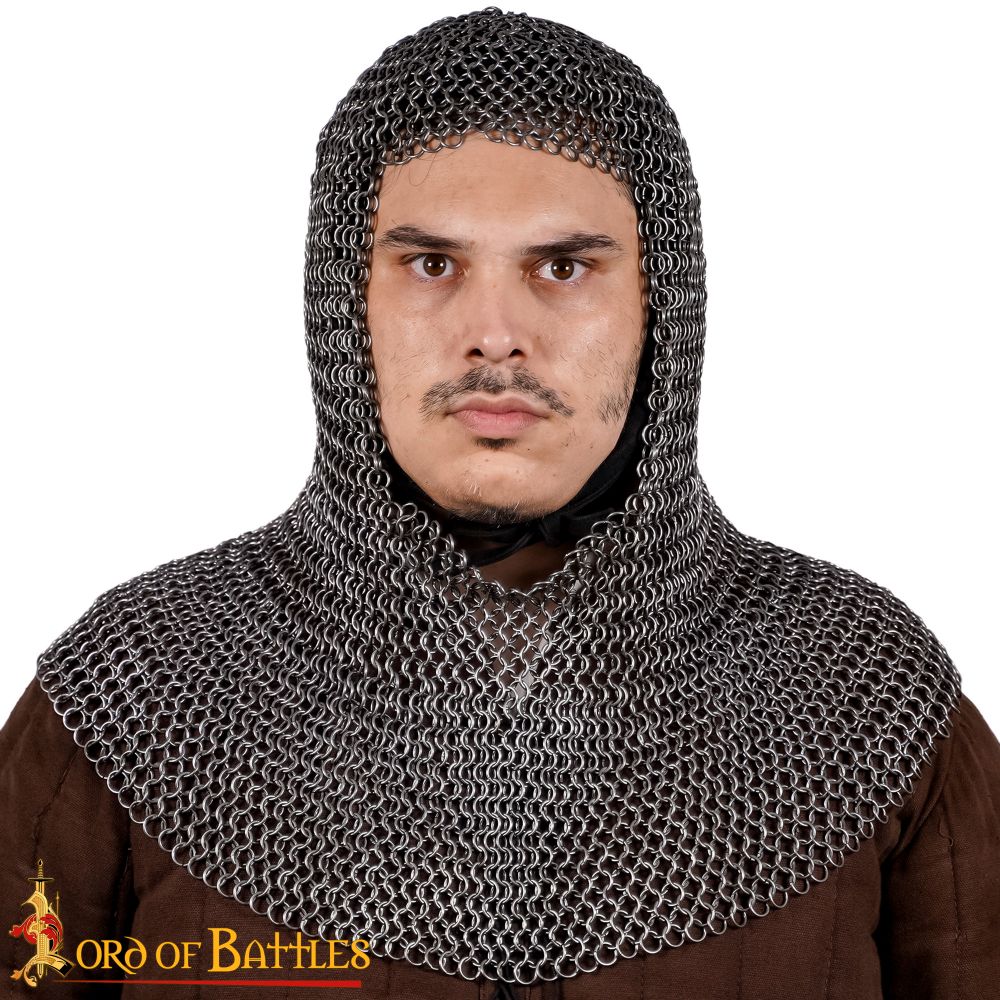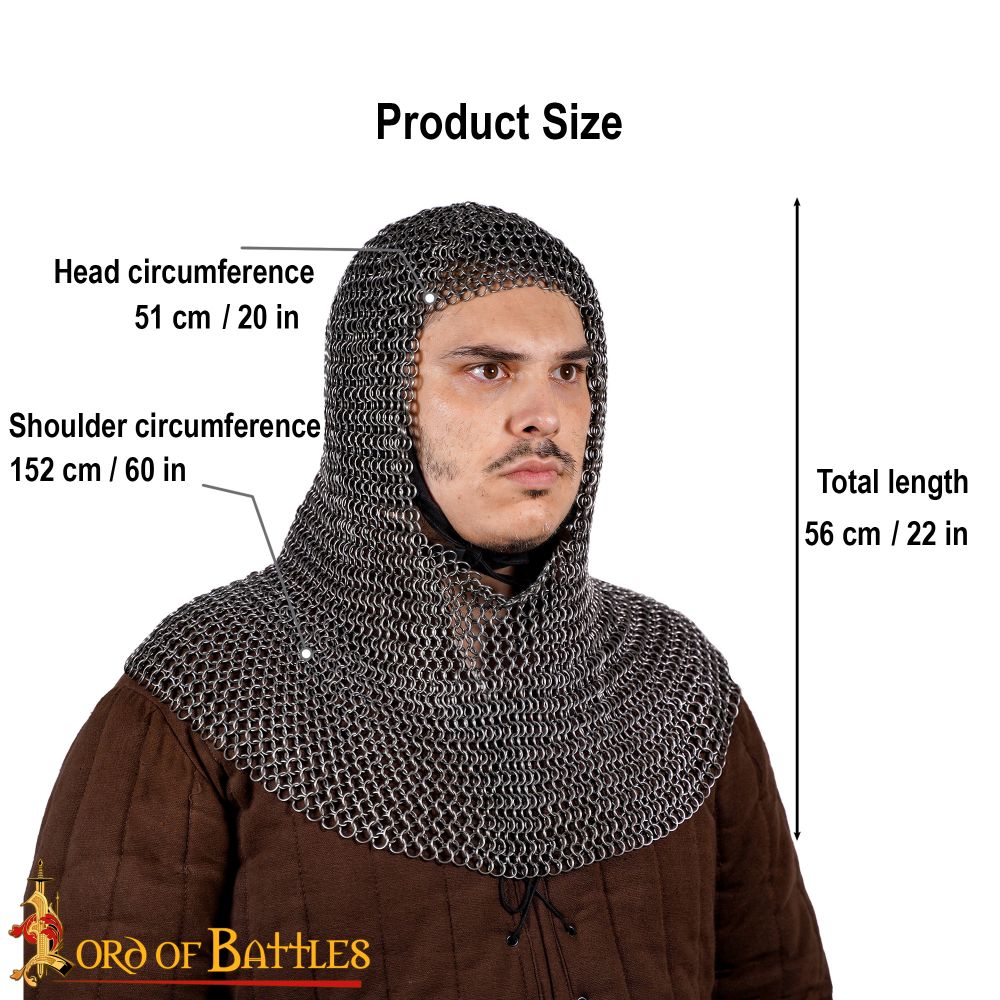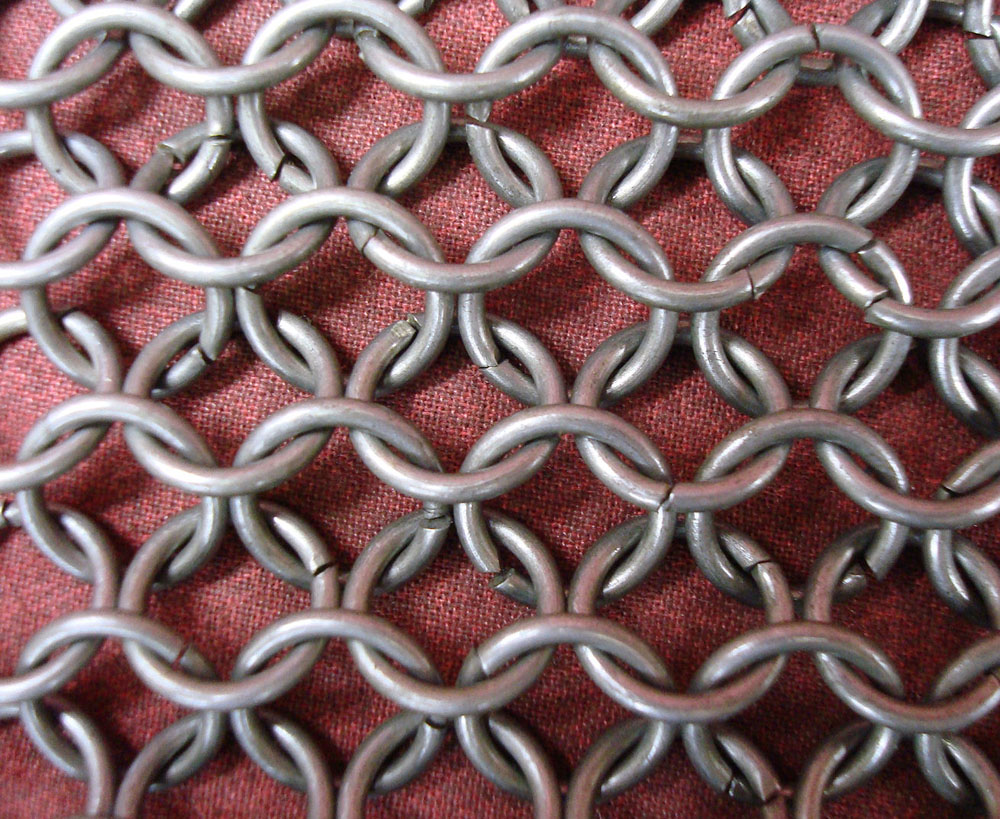Chainmail is the archetypal armor defense of the ancient and medieval world. Essentially a metal mesh, the links dissipate the force of impacts and provide excellent defense against cuts and slashes, though a strong penetrating impact from armor piercing weapons, arrows and bolts could reliably split links apart. Chainmail was often paired with fabric or leather based armors beneath for additional protection, particularly for the absorption of blunt impact. When the mail defense was penetrated however, broken links could be forced into the wound, seeding it for infection. This drawback however was apparently not enough to discourage its ever-increasing use until the relatively late age of better plate armors.
Its inventors are in dispute, but top contenders for the innovators of mail are the 3rd Century BCE Celtic tribes who resided in modern day Romania, or the Etruscans of the Italian Peninsula. No armor may be as cross-cultural and ubiquitous as mail, for it spread beyond Europe to the Middle East, India and onwards to Japan – a testament to its usefulness.
The process of creating mail is labor intensive – hundreds of man hours to create a mail tunic. Metal wire must be wrapped around a wooden form, cut and then knitted into shape, usually being riveted through flattened ends previously pounded flat. In contrast to most cultures, the Japanese Kusari armor was not riveted, they simply pressed the two ends together. This is called butting the mail. Numerous different pattern methods of linking the mail together exist, changing to suit local tastes and times throughout history.
Though timely to create, mail could last for decades – the natural movement of the rings clears them of most rust, and it can be repaired with additional links, often scavenged from foes after conflict. It was expensive until the high middle ages and we can see that wealthy and well-equipped soldiers in antiquity, such as the Celts and the Roman Legionaries wore mail tunics. The elite Cataphract cavalry of the Sassanid Persians were often covered head to toe in mail, likewise their well-armored horses – making them into tanks of the Classical Era. In later centuries we see the Norman knights and their counterparts of the early Middle Ages being covered head to toe in mail links. By the high middle ages the cost of mail began to drop several times over as armoring workshops and guilds began to utilize a production line method of crafting – no longer would a single armorer create his piece from start to finish, but a team would specialize their labors into limited, repetitive tasks. In England this change caused a 4 to 8 fold decrease in the cost of mail, making it no longer a defense affordable only to the wealthy or professional soldiery.
This mail coif protects the head and neck, some warriors only wore the coif over a padded arming cap, but many wore a solid helmet over the coif for further protection. This coif is made in the butted style of wire simply pressed into form end to end. The rings are made from high tensile wire and are 9mm rings / 16 gauge.







Reviews
There are no reviews yet.